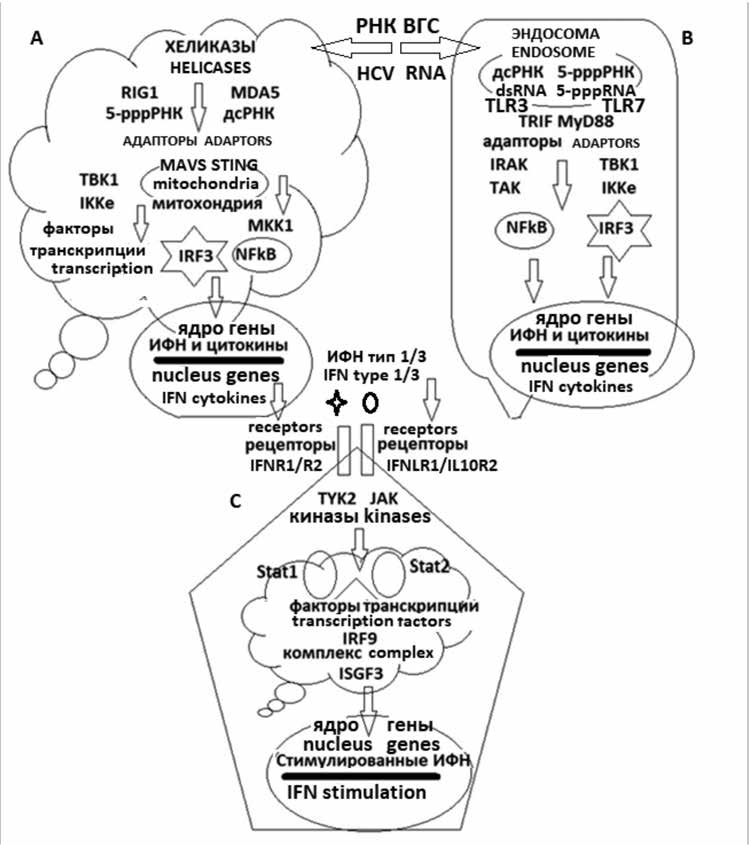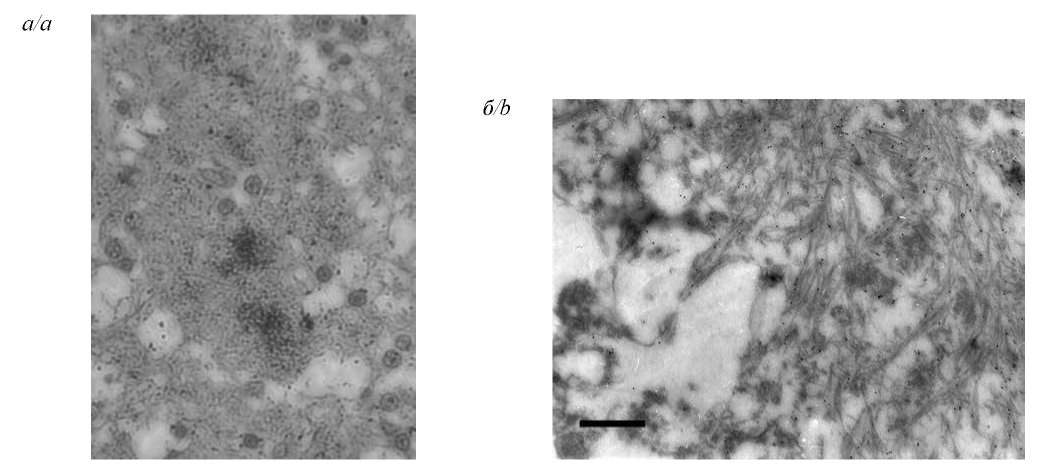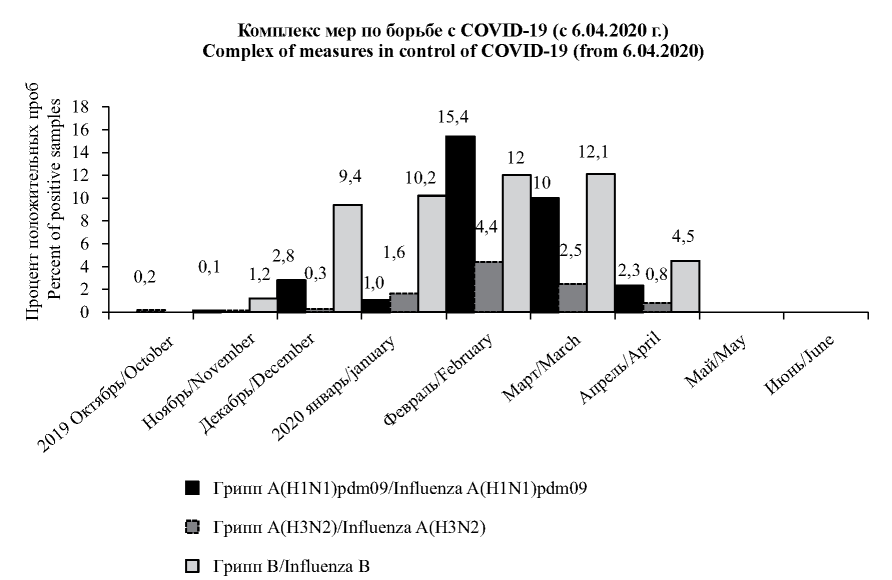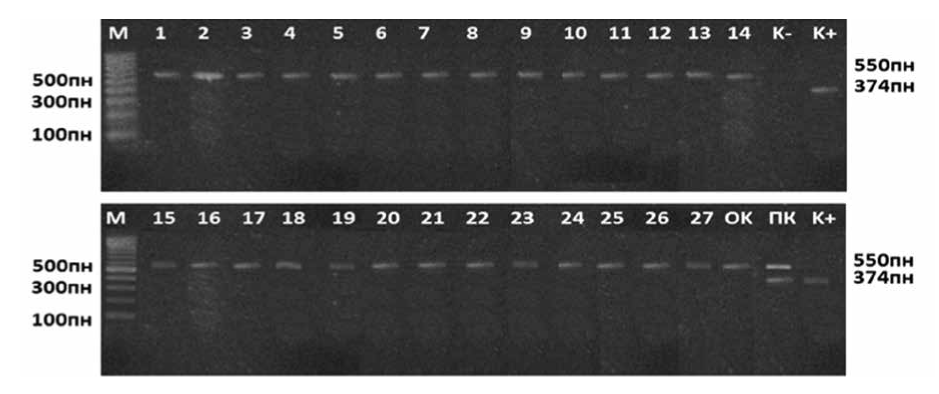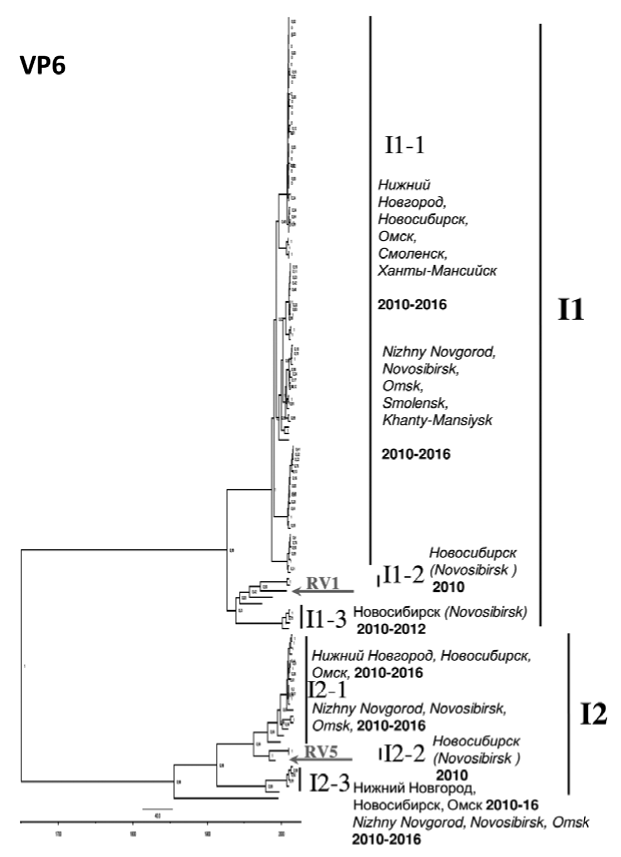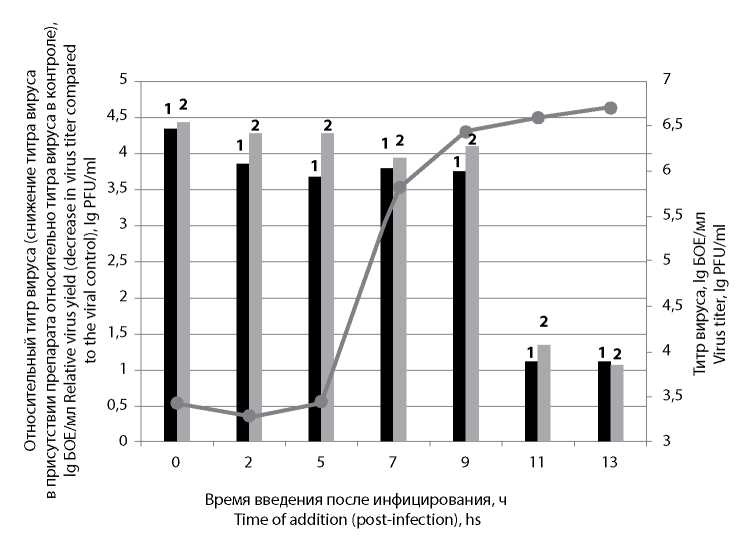Том 65, № 6 (2020)
- Год: 2020
- Выпуск опубликован: 08.12.2020
- Статей: 10
- URL: https://virusjour.crie.ru/jour/issue/view/47
Весь выпуск
ОБЗОРЫ
Вирус гепатита С (Flaviviridae: Hepacivirus: Hepacivirus C): регуляция сигнальных реакций врождённого иммунитета
Аннотация
Изучение регуляции сигнальных реакций врождённого иммунитета вирусом гепатита С (ВГС) поможет раскрыть причины перехода острой формы заболевания в хроническое течение. Рассмотрены молекулярные механизмы активации рибонуклеиновой кислотой ВГС рецепторов TLRs (Toll-like) и RLRs (RIG-like) врождённого иммунитета и процессов сигнальной трансдукции, приводящей к синтезу интерферона и воспалительных цитокинов. Подробно проанализированы ингибирующие эффекты неструктурных и структурных белков ВГС на сигнальные реакции иммунитета. Представленная информация является результатом анализа литературных данных, опубликованных в международных базах преимущественно за последние 5 лет. В заключение сигнальные рецепторы предлагаются как мишени для разработки новых противовирусных препаратов с иммунотерапевтической активностью.
 307-316
307-316


Роль герпесвирусов в развитии заболеваний урогенитального тракта и бесплодия у женщин
Аннотация
В обзоре представлены данные о распространении всех известных герпесвирусов человека (ГВ) в урогенитальном тракте женщин. Согласно ВОЗ почти у 500 млн людей во всём мире выявлена генитальная инфекция, вызванная ГВ. Эти возбудители обнаруживаются при различных воспалительных заболеваниях в нижних и верхних отделах женского генитального тракта: при вагините, цервиците; у имеющих внематочную беременность – в фаллопиевых трубах; у страдающих бесплодием – в цервикальном канале, эндометрии, яичниках. Вирус простого герпеса 1 типа (ВПГ-1) впервые обнаружен в ооцитах женщин с неудачными по- пытками экстракорпорального оплодотворения (ЭКО). ГВ-инфекции (ГВИ) негативно влияют на все стадии репродуктивного процесса от зачатия до рождения ребёнка. Доказано, что ВПГ и цитомегаловирус (ЦМВ), а также вирус герпеса человека 6 типа (ВГЧ-6) в период беременности значительно увеличивают риск спонтанных абортов, преждевременных родов и мертворождений. Внутриутробная ГВИ – одна из ведущих причин врождённых пороков развития. В работе рассмотрены особенности гуморального и клеточного иммунитета при генитальных инфекциях герпесвирусной этиологии. Интравагинальное заражение ВПГ‑2 вызывает изменение клеточного состава слизистой оболочки влагалища; наряду с клетками, мобилизуемыми из крови, защитную роль играют резидентные Т-клетки памяти (TRM), натуральные киллеры (NK-клетки), а также регуляторные Т-клетки (Treg), функция которых – поддержание баланса активности лимфоцитов. Продолжающееся распространение ГВИ в значительной степени объясняется переходом первичной инфекции в латентную форму с последующей возможностью реактивации, так как латентный возбудитель недоступен для иммунного распознавания и действия лечебных препаратов. В последние годы разработана новая биотехнологическая система редактирования генома CRISPR/Cas9, которая в принципе способна распознавать не только активные, но и латентные вирусы и действовать на них. Первые обнадёживающие результаты открывают возможность разработки в будущем эффективных технологий элиминации ГВ и эрадикации вызываемых ими инфекций.
 317-325
317-325


Прижизненная диагностика прионных болезней
Аннотация
В обзоре представлено современное состояние проблемы диагностики прионных болезней (ПБ) человека и животных с кратким описанием их этиологии и патогенеза. Показано, что понимание природы этиологического агента ПБ определило их зоонозный потенциал и привело к развитию высокоспецифичных иммунологических методов диагностики, направленных на выявление инфекционной изоформы прионного белка (PrPd) как единственного маркёра заболевания. В этой связи кратко приведены результаты исследований, включая собственные, касающиеся конверсии нормальных молекул прионного белка (PrPc) в PrPd, получения моноклональных антител (МКАТ) и их апробации в качестве иммунодиагностических реагентов для посмертного выявления PrPd в различных форматах иммуноанализа. Особо выделен вопрос, связанный с разработкой методов прижизненной диагностики ПБ. В связи с этим подробно рассматривается методика амплификации аминокислотных последовательностей с использованием индуцированной вибрацией конверсии PrPc в PrPd в режиме реального времени (ИВК-РВ). Приводятся результаты последних исследований по оценке чувствительности, специфичности и воспроизводимости данного метода, проведённых в различных лабораториях мира. Полученные данные свидетельствуют о том, что ИВК-РВ в настоящее время является наиболее перспективным лабораторным методом исследованния для выявления PrPd в биологическом материале на доклинической стадии заболевания. Отмечен значительный вклад учёных США во внедрение данной методики в клиническую практику на модели диагностики хронической изнуряю- щей болезни диких копытных (ХИБ). Возможное дальнейшее распространение ХИБ в популяциях лосей и оленей на межграничных с Россией территориях, также как и установленный факт алиментарной передачи ХИБ макакам, свидетельствуют об угрозе появления ПБ в нашей стране. В заключение подчёркнута важность разработки новых сверхчувствительных и/или селективных компонентов известных методов идентификации PrPd с точки зрения оценки рисков создания искусственных инфекционных прионных белков in vivo или in vitro, прежде всего новых патогенных изоформ («штаммов») и синтетических прионов.
 326-334
326-334


ОРИГИНАЛЬНЫЕ ИССЛЕДОВАНИЯ
Особенности циркуляции вирусов гриппа и ОРВИ в эпидемическом сезоне 2019–2020 гг. в отдельных регионах России
Аннотация
Введение. Мониторинг циркуляции вирусов гриппа в структуре возбудителей ОРВИ и изучение их свойств в эпидемическом сезоне 2019–2020 гг. в Российской Федерации представляют актуальные направления исследований и соответствуют задачам Глобальной стратегии по борьбе с гриппом, выдвинутой ВОЗ в 2019 г.
Материал и методы. Использованы данные эпидемиологического надзора за заболеваемостью и госпитализацией при гриппе и ОРВИ в разных возрастных группах населения; вирусологические, молекулярно-генетические и статистические методы.
Результаты. Наиболее вовлечёнными в эпидемический процесс были дети дошкольного возраста, в то же время для лиц 18–40 лет показана бóльшая частота госпитализаций. Отмечена доминирующая роль вируса гриппа A(H1N1)pdm09 у госпитализированных, в том числе в этиологии пневмоний. Показана роль возбудителей ОРВИ в утяжелении течения пневмонии и бронхообструктивного синдрома у детей. Установлены различия по спектру циркулирующих возбудителей ОРВИ в разных регионах России. Этиологию эпидемического подъёма определили вирусы гриппа A(H1N1)pdm09 и В/Виктория-подобные, долевое участие которых в структуре ОРВИ составило 7,3 и 8,0% соответственно. По антигенным свойствам выявлены отличия эпидемических штаммов вирусов гриппа A(H3N2) и В по отношению к вирусам, входившим в состав вакцин. Доминирующими генетическими группами в популяции штаммов вируса гриппа A(H1N1)pdm09 были представители 6B1.A5/183P, A(H3N2) – 3С.2а1b+137F и В – V1A.3 линии В/Виктория-подобных. Сохранён благоприятный профиль чувствительности эпидемических штаммов к препаратам с антинейраминидазной активностью. Большинство из изученных штаммов возбудителей гриппа обладали рецепторной специфичностью, характерной для вирусов гриппа человека.
Заключение. Полученные результаты определили особенности циркуляции вирусов гриппа и ОРВИ в эпидемическом сезоне 2019–2020 гг. на различных территориях России. Результаты подтверждают роль вируса гриппа A(H1N1)pdm09 в развитии тяжёлых форм течения заболевания у лиц 18–40 лет, а также в качестве этиологического фактора пневмоний. Отмечен продолжающийся дрейф вирусов гриппа, что, по-видимому, не могло не сказаться на эффективности вакцинопрофилактики, а также было учтено в рекомендациях экспертов ВОЗ по составу гриппозных вакцин для стран Северного полушария на период 2020–2021 гг.
 335-349
335-349


Отсутствие случаев передачи вируса гепатита В (Hepadnaviridae: Orthohepadnavirus: Hepatitis B virus) госпитализированным пациентам с психическими расстройствами от медицинского персонала или членов семьи
Аннотация
Введение. Ранее было установлено, что в Иране распространенность инфекции, вызываемой вирусом гепатита B (ВГВ), выше среди пациентов с психическими расстройствами, находящимися в специализированных учреждениях, чем в общей популяции. Целью данного исследования было изучение ВГВ-инфекции среди медсестер и членов семей госпитализированных пациентов с психическими расстройствами.
Материал и методы. В исследовании участвовали 110 медсестер и членов семей пациентов с психическими расстройствами, госпитализированных в пяти интернатах в Тегеране. Частоту выявления поверхностного антигена ВГВ (HBsAg) и антител к капсидному белку вируса B (анти-HBc) определяли методом иммуноферментного анализа (ИФА). ДНК ВГВ выявляли методом полимеразной цепной реакции (ПЦР) с вложенными праймерами. Для сравнительного анализа вирусных геномов, выделенных из образцов сыворотки крови медицинского персонала, с последовательностями ВГВ, выделенными в мире, было построено филогенетическое дерево методом присоединения соседей.
Результаты. Из 102 обследованных медсестер три (3%) были позитивными по HBsAg (100% женщины). Ни один из этих образцов не был положителен по ДНК ВГВ, при этом восемь (7,3%) медработников были положительны по анти-НВс, из них двое (25%) были мужчины и шесть (75%) – женщины. Секвенирование единственного положительного по ДНК ВГВ образца показало, что данный геноизолят относится к субгенотипу D1, серотипу ayw2. Никто из членов семей пациентов не был положительным по HBsAg, анти-HBc или ДНК ВГВ.
Заключение. Результаты исследования продемонстрировали более высокую частоту выявления HBsAg среди медсестер (3%) по сравнению с общей популяцией в Иране (1,7–2,1%). Выделенный от медсестер геноизолят ВГВ принадлежал субгенотипу D1, серотипу ayw2, что соответствует предыдущим исследованиям в Иране. В вирусном геноме не были выявлены мутации, связанные с лекарственной устойчивостью или ускользанием от иммунного ответа. Низкий уровень иммунного давления на вирус при бессимптомной хронической ВГВ-инфекции может служить объяснением консервативности нуклеотидной последовательности выявленного генома ВГВ.
 350-356
350-356


Изучение тератогенности вакцинного штамма вируса краснухи «Орлов-В» (Matonaviridae: Rubivirus: Rubella virus) в опыте на обезьянах макак-резус
Аннотация
Введение. Вирус краснухи обладает выраженными тератогенными свойствами, способными вызывать генерализованную внутриутробную инфекцию плода персистирующего характера. В связи с этим необходимым этапом доклинического изучения вакцинного штамма для живой аттенуированной вакцины против краснухи является контроль утраты тератогенности, присущей диким штаммам вируса.
Цель исследования: комплексное изучение тератогенных свойств вакцинного штамма вируса краснухи «Орлов-В» в опыте на обезьянах макак-резус.
Материал и методы. В эксперименте использовали серонегативных к вирусу краснухи самок вида макак-резус (Macaca rhesus, Macaca mulatta) на ранних сроках беременности в возрасте 4–7 лет (n = 13). Животных опытной группы (n = 9) однократно внутримышечно иммунизировали препаратом из штамма «Орлов-В». Обезьян группы сравнения (n = 3) иммунизировали коммерческим препаратом, содержащим вакцинный штамм Wistar RA27/3. Самке контрольной группы (n = 1) вводили растворитель вакцины против краснухи. Изучение возможных тератогенных свойств вакцинных штаммов вируса краснухи проводили с использованием комплекса клинических, иммунологических, патоморфологических и вирусологических методов. Клинические наблюдения осуществлялись в течение 3 месяцев после рождения детёнышей. Определение титров антител в сыворотке крови иммунизированных макак-резусов выполняли в реакции торможения гемагглютинации (РТГА) на 28–30 сутки после заражения. Метод иммуноферментного анализа (ИФА) ис- пользовали для определения антител класса IgM в сыворотке обезьян первого месяца жизни. Выявление РНК вируса проводили методом полимеразной цепной реакции (ПЦР) с электрофоретической детекцией продуктов амплификации.
Результаты. Установлено отсутствие маркёров врождённой краснушной инфекции у особей, родившихся от привитых во время беременности обезьян. Показано, что метод ПЦР может являться информативным тестом, подтверждающим отсутствие тератогенных свойств вакцинных штаммов вируса краснухи.
Обсуждение. Полученные данные охарактеризовали вакцинные штаммы вируса краснухи «Орлов-В» и Wistar RA27/3 как утратившие тератогенные свойства. Обсуждается возможность использования альтернативной по отношению к классическим патоморфологическим методам стратегии доклинической оценки специфической безопасности противовирусных вакцин с применением комплекса клинических, иммунологических, патоморфологических и вирусологических методов.
Заключение. Результаты, полученные в рамках настоящего исследования, показали отсутствие тератогенных свойств вакцинного штамма вируса краснухи «Орлов-В».
 357-363
357-363


Филодинамическая характеристика российской популяции ротавируса А (Reoviridae: Sedoreovirinae: Rotavirus) на основе гена VP6
Аннотация
Введение. Ротавирусы вида А являются одной из лидирующих причин острого гастроэнтерита у детей первых лет жизни. В настоящее время ротавирусная инфекция относится к управляемым инфекционным процессам. Наиболее представленным протеином ротавириона является белок VP6.
Материал и методы. В качестве материала для исследования были использованы 262 нуклеотидные последовательности гена VP6 ротавируса вида А, изолированного на территории России. Филогенетический анализ и расчет филодинамических характеристик были осуществлены с использованием пакета про- грамм BEAST v.1.10.4. Выведение и анализ аминокислотных последовательностей проводили в программе MEGAX.
Результаты. На территории Российской Федерации показана циркуляция ротавирусов 3 сублиний генотипа I1 и 3 – генотипа I2. Установлен уровень накопления мутаций, который оказался схожим для генотипов I1 и I2 и составил 7,732E-4 и 1,008Е-3 нуклеотидов/сайт/год соответственно. Показано, что эффективные размеры ротавирусной популяции гена VP6 I1 и I2 генотипов стабильны и с начала 2000‑х гг. имеют тенденцию к снижению. Сравнительный анализ аминокислотной последовательности в области сайтов внутриклеточной нейтрализации А (231–260 а.о.) и В (265–292 а.о.) позволил выявить у ряда российских штаммов генотипа I1 мутацию в позиции V252I, а у части из них (I1 и I2 генотипов) – мутацию I281V, не связанные с принадлежностью штаммов к внутритиповым сублиниям. Анализ 3 Т‑клеточных эпитопов выявил 4 ассоциированных с принадлежностью к одной из геногрупп аминокислотных различия (в позициях 305, 315, 342 и 348 а.о.).
Заключение. На основе филодинамических характеристик и аминокислотного состава антигенных детерминант сделан вывод о высокой консервативности протеина VP6.
 364-372
364-372


Антивирусный эффект нового конъюгата пурина LAS-131 в отношении вируса простого герпеса 1 типа (Herpesviridae: Alphaherpesvirinae: Simplexvirus: Human alphaherpesvirus 1) in vitro
Аннотация
Введение. Вирусы простого герпеса типа 1 (ВПГ-1) чрезвычайно широко распространены во всем мире и, подобно другим герпесвирусам, устанавливают пожизненные инфекции в организме хозяина. Спорадически реактивируясь, ВПГ-1 вызывает рецидивы как у иммунокомпетентных лиц, так и у имеющих ослабленный иммунитет и может стать причиной тяжелых заболеваний (слепота, энцефалит, генерализованные инфекции). Современные противогерпетические лекарственные средства, нацеленные главным образом на ингибирование репликации вирусной ДНК, не всегда оказываются достаточно эффективными, например из-за развития лекарственной резистентности. Как было показано нами ранее, новое оригинальное соединение LAS-131 высокоселективно ингибирует ре- продукцию ВПГ-1 (индекс селективности, SI = 63). В присутствии этого вещества в концентрации 20 мкг/мл титр ВПГ-1 (штамм L2) в условиях одноцикловой инфекции in vitro снижается на 4 lg.
Материал и методы. Чтобы установить этап(ы) жизненного цикла вируса, чувствительный(ные) к действию LAS-131, мы применили обычно используемый в мировой практике подход (метод варьирования времени добавления препарата, time-of-addition assay), позволяющий установить временнóй период, на который можно отсрочить введение тестируемого соединения без потери его противовирусной активности, и сравнить этот показатель с переломным временем введения ингибиторов с хорошо известным механизмом действия (in vitro).
Результаты. Нами впервые показано, что LAS-131 сохраняет выраженное противовирусное действие при внесении в экспериментальную систему не позднее 9 ч после инфицирования (p.i.), но не влияет на выход ВПГ-1 из клетки.
Обсуждение. Полученные результаты, а также известные данные о том, что в клеточной культуре, инфицированной ВПГ с высокой множественностью (≥1 БОЕ/кл), синтез вирусной ДНК прекращается через 9–12 ч после адсорбции, в совокупности позволяют предположить, что рассматриваемое соединение вмешивается в жизненный цикл ВПГ‑1 во время синтеза вирусной ДНК. Для точного установления биомишени, на которую действует LAS-131, необходимо проведение дальнейших исследований его механизма действия.
 373-380
373-380


ИНФОРМАЦИЯ
Резолюция Всероссийской научно-практической интернет-конференции с международным участием «Молекулярная диагностика и биобезопасность — 2020» (Москва, 6–8 октября 2020 г.)
Аннотация
В соответствии с Планом основных организационных мероприятий Роспотребнадзора на 2020 г. в Москве 6–8 октября 2020 г. состоялась Всероссийская научно-практическая интернет-конференция с международным участием «Молекулярная диагностика и биобезопасность — 2020». Мероприятие организовано ФБУН ЦНИИ Эпидемиологии Роспотребнадзора при поддержке Российской академии наук, Всероссийского научно-практического общества эпидемиологов, микробиологов и паразитологов, Национального научного общества инфекционистов.
 381-382
381-382


 383-384
383-384











